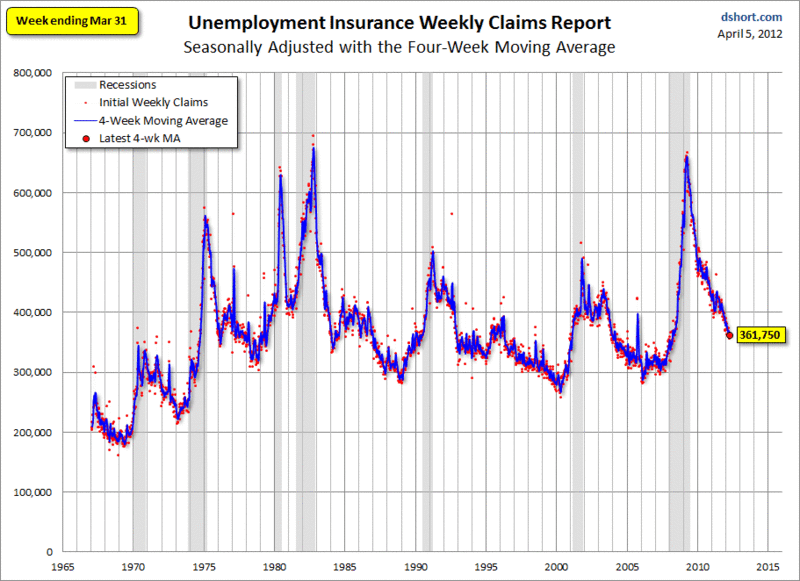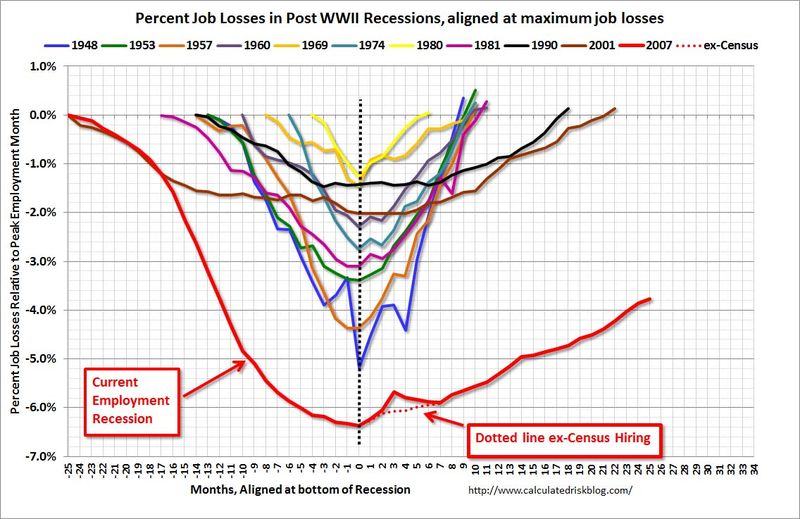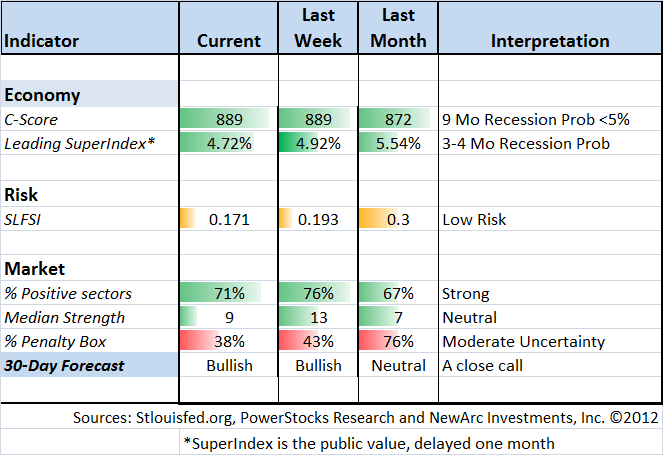Experienced traders understand that markets rarely move in a straight line.
Staying with a long and strong trend -- either up or down -- is often the most difficult trade.
We expect stair steps and corrections since fundamentals rarely support such rapid changes.The result is that as a move gets more extended, even traders who have played the trend are poised to react.
I have often cited Charles Kirk as the leading source for the trading perspective, and he also has many ideas for investors with a longer time horizon.His chart show (small fee required) is part of my weekly preparation.(I usually cannot cite his findings, since he posts the show on Sunday and I write on Saturday, but this week he advanced the schedule).His explanation for last week was that the market was looking for excuses to sell --and found them.
That makes sense to me, since nothing in the news was that dramatic.The question is whether the same psychology will continue.I'll offer some thoughts on that subject in the conclusion, but first let us do our regular review of last week's data and events.
Background on "Weighing the Week Ahead"
There are many good sources for a comprehensive weekly review. I single out what will be most important in the coming week. My theme is an expert guess about what we will be watching on TV and reading in the mainstream media. It is a focus on what I think is important for my trading and client portfolios.
Unlike my other articles at "A Dash" I am not trying to develop a focused, logical argument with supporting data on a single theme. I am sharing conclusions. Sometimes these are topics that I have already written about, and others are on my agenda. I am trying to put the news in context.
Readers often disagree with my conclusions. Do not be bashful. Join in and comment about what we should expect in the days ahead. This weekly piece emphasizes my opinions about what is really important and how to put the news in context. I have had great success with my approach, but feel free to disagree. That is what makes a market!
Last Week's Data
Each week I break down events into good and bad. Often there is "ugly" and on rare occasion something really good. My working definition of "good" has two components:
- The news is market-friendly. Our personal policy preferences are not relevant for this test. And especially -- no politics.
- It is better than expectations.
There was not much to cheer about last week.
- Sentiment is still pretty negative.I like to look at this through data describing behavior rather than responses to surveys.Ed Yardeni looks at fund flows and concludes the following:
- ISM manufacturing was better than expected at 53.4 versus expectations of 53.0 and a 1 point increase over last month’s 52.4. The ISM’s own research says that this value (if annualized) corresponds to GDP growth of 3.7%.The report internals were generally good with prices paid a bit lower, customer inventories lower, and order backlog higher. New orders were down slightly, however, and inventories unchanged rather than lower. All-in-all, a very good report.
- Initial jobless claims declined, but from an upwardly-adjusted number.I am calling this "good" but it is continuing a relatively flat range at the 350K level.Job losses are only half of the problem.We also need job creation.As you can see from Doug Short's chart, a reduction of another 50K or so would signal much better economic health.

The Bad
Most of the economic news was negative. I want to emphasize the employment situation, but I'll start with some lesser indicators.
- ISM services disappointed. While services make up more of the economy than manufacturing, the data series is shorter. It is very interesting, but more difficult to interpret.
- Auto sales were a bit below forecast and gas prices are higher.
- Employment gains were disappointing. Job gains from the establishment survey were only 120K, much lower than expectations of over 200K. This deserves more careful analysis, so I will give it a special section this week.
The monthly employment situation report was a disappointment, for all of the reasons that last month's report was encouraging: light on payroll job gains, negative labor force revisions, bad hourly wages, and a shorter work week. That just about covers it.
Others came out with a "flash report" but investors do not need that, especially since there was no trading on Friday.
Perspective
This chart from Calculated Risk shows the depths of the job losses and how far we are from the needed recovery.

Along the same lines, the Atlanta Fed has a helpful tool.You can plug in a target unemployment rate and a time frame to see what the monthly job gain needs to be to meet your target.Try it!
Sources
For several years I have championed the idea that the BLS measurement of job growth was one of several, and not always the best.I write this in my monthly employment preview (as I did last week).For a long period of time I opined that the official reports were too positive, so I have earned some credibility on this subject.
As I noted in the preview, other methods suggested job gains of about 200K.When we finally know the truth -- after revisions and benchmark adjustments -- this may prove to be correct.By that time no one will care.
The political world uses only the official data.The media world breathlessly analyzes it.As investors, we are free to use many different sources -- and we should.
Range of Error
The official methods involve two different surveys.The establishment survey gives us the official job gain, but it has a confidence interval of over 100K.The household survey has a smaller sample and a confidence interval over 400K.Pundits often forget that this applies to every element of the report, including all of the subgroups.
I wrote an article on this topic four years ago where I emphasized sampling error and the danger of relying on one month.It still reads pretty well.My fellow Kauffman blogger Ryan Avent did the job more persuasively with this interpretation:
"TODAY, the Bureau of Labour Statistics released its March employment report. There is a 90% chance that employment rose by between 20,000 and 220,000 jobs. The change in the number of unemployed from February to March was probably between (roughly) -400,000 and 150,000, and there's a good chance that the unemployment rate is between 8.1% and 8.5%. Reported changes for important subsectors are too small relative to the margin of error to be worth discussing. In all probability, the employment growth has remained close to the recent trend of a 200,000 jobs per month increase."
Please remember that this is just sampling error.The short-term revisions relate to businesses that have been slow in responding.The benchmark revisions have most recently revealed that job growth from new business formation has been under-estimated.
Alternative Measures
The unemployment rate might actually be moving significantly lower, according to Gallup via Bonddad.
Looking at unemployment without attention to seasonality and labor force participation is a big mistake viaSteven Hansen.
It all amounts to an unpleasant (but not earth-shaking) surprise via Felix Salmon.
My own take is in the conclusion.
The Ugly
A research project testing investment advisors found that most recommended unsuitable funds that earned them higher commissions.This "sting" used actors to pose as clients.
There are many good investment advisors, and they all start by determining the client's needs and emphasizing the suitability of investments.
Runner up:The President of Hungary plagiarized his doctoral dissertation.This is bad enough, but there are apparently no consequences.He is continuing in office as if nothing had happened.
The Indicator Snapshot
It is important to keep the current news in perspective. My weekly snapshot includes the most important summary indicators:
- The St. Louis Financial Stress Index.
- The key measures from our "Felix" ETF model.
- An updated analysis of recession probability.
The C-Score is a weekly interpretation of the best recession indicator I found, Bob Dieli's "aggregate spread." I'll explain more about the C-Score soon.Bob also has a group of coincident indicators.Like most of the top recession forecasters, he uses these to confirm the long-term prediction.These indicators are not close to a recession signal.
I am a big fan of Dwaine van Vuuren, whose excellent statistical work is giving us better insight into a wide range of recession forecasting methods. The data point that I cite each week (the four-month recession outlook) is only one aspect of a comprehensive report. The SuperIndex includes nine different methods, including the ECRI. The analysis has a very strong, practical market application which has paid off richly for subscribers over the last few months. How? Mostly by putting the ECRI recession forecast into better perspective.I am publishing the one-month delayed Leading SuperIndex estimate of recession probability in the near future -- three or four months. This is plenty of time to have value for public followers of their reports.
This week they add another interesting recession indicator, finding states that show economic changes in advance of the nation.You will be surprised at which states are the "canaries in the coal mine."
Here is the latest example, which does a great job of explaining the current ECRI changes in methods.

Our "Felix" model is the basis for our "official" vote in the weekly Ticker Sense Blogger Sentiment Poll. We have a long public record for these positions. This week we shifted to bullish after three weeks in neutral. This is a close call, but ratings are improving, including the broad averages.
[For more on the penalty box see this article. For more on the system ratings, you can write to etf at newarc dot com for our free report package or to be added to the (free) weekly ETF email list. For daily ETF commentary from Felix, you can sign up for Wall Street All-Stars, where I still have a few discounted memberships available. You can also write personally to me with questions or comments, and I'll do my best to answer.]
The Week Ahead
US stocks will start the week under pressure because of Friday's employment report.Futures trading continued for 45 minutes after the report, indicating an expected stock decline of about 1%.
I expect additional pressure from a 60 Minutes segment scheduled to run Sunday evening.The focus will be on continuing problems in Europe, and the preview is very negative.You can check it out here.
The most important economic data include initial claims and the PPI on Thursday and the CPI and Michigan confidence on Friday.
I am not a big fan of the small business optimism index (Tuesday) but the JOLTS report could be interesting.
With everyone parsing everything from the Fed for a hint of more QE, I will quit saying that I do not expect policy implications from these speeches.Someone is going to draw an inference whether it is supported or not!Fed Chair Bernanke speaks on Monday and Friday and Vice-Chair Yellen on Wednesday.The speeches seem to cluster since there is a quiet period right before the FOMC meetings.Speaking of the next meeting, we will also get the beige book on Wednesday.This collection of anecdotal evidence from around the country is compiled by a different district for each meeting.It does set the tone for the interpretation of the hard data, and it is always interesting.
We will get the official start of earnings season with Alcoa, but I do not think this will be a focus until next week.At that point earnings will be very important.
Trading Time Frame
Our trading accounts have been 100% invested since December. Felix caught the current rally quite well, buying in on December 19th. There are more sectors in the buy range, and the overall ratings have declined. This program has a three-week time horizon for initial purchases, but we run the model every day and change positions when indicated. Felix has been more confident than I have been on the trading time frame, and has stayed invested in the face of a lot of skepticism. This illustrates the importance of watching objective indicators instead of headlines. Despite the modest overall ratings, Felix kept us fully and profitably invested for trading accounts, finding the bull market in selected sectors. We have 28 sectors in the universe, so we can be fully invested if there are three strong sectors, even if the market overall is neutral or negative.
Investor Time Frame
Long-term investors should be aware of the continuing rapid decline in the SLFSI. Even for those of us who see many attractive stocks, it is important to pay attention to risk. In early October we reduced position sizes because of the elevated SLFSI. The index has now pulled back out of our "trigger range," and is declining further. This sort of decline has been a good time to buy stocks on past occasions. Worry is still high, but has now declined to a more comfortable level.
Even though stock prices are higher than in October, the risks are much lower. I continue to increase position size for risk-adjusted accounts. I am also looking more aggressively for positions in new accounts. Until last week this has been a challenge, since the market has offered only occasional dips to buy.
The continuing reduction in volatility has helped our enhanced yield program, where we aim for 8-9% returns with low volatility. This week may provide some opportunities for new ideas.
Our Dynamic Asset Allocation model has become much less conservative. Gone are positions in bonds and gold. DAA responds to the message of the market, cashing in on extended moves. It is rather like what some call a "lazy portfolio" but better. The DAA approach is finding some of the best sectors over the last year.
Final Thoughts on Employment -- and the Fed
Last week's employment data did not provide much fresh information.The official stats were weaker than expected after a couple of months where the results exceeded other measures.In my weekly article I predicted that seasonal factors could create some problems in interpreting the data.
It is important to get beyond the noisy political and market rhetoric.The broad range of indicators show continuing modest economic growth.Bernanke is likely to act if things get worse.There is no sign that inflation is moving past the Fed's 2% target or that the big Fed balance sheet is turning into excessive M2 growth.
I would not call this a sweet spot (unlike this Bloomberg article), but it is also not a recession.
And Finally -- for Market Timers
I have taken time to explain how many investors are making a big mistake with inappropriate market-timing methods.
- The Seduction of Market Timing. The secret of sales is to claim a lot, whether or not you can deliver.
- Do You Adjust Your Price Targets? Most do not -- and this ranges from market experts to the average investor. Unless you are constantly doing a re-evaluation, you are missing out.
It is popular right now to find reasons to sell, ignoring the change in market fundamentals. Here is a little quiz?
At market tops, what percentage of stocks are above their 200-day moving average?
What percentage are above that level right now?
Chris Puplava, using a technique from Paul Desmond, classifies stocks as above or below their 200-day moving average, and also whether that average is rising or falling.He observes, "As a bull market approaches a top you should see a large percentage in the topping category (BR, fall) and right now only 3% of the S&P 500 members reside in this category."Here is a helpful table.

Puplava draws the following conclusion:
"What should also be encouraging to the bulls is that the sectors most levered to the economy (cyclicals) are showing some of the strongest breadth, which is important as these sectors are usually the first to top out and enter the BR and BF categories."
